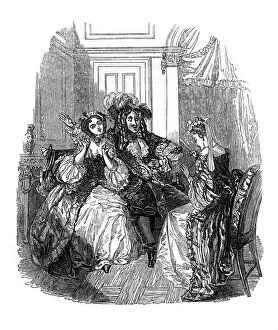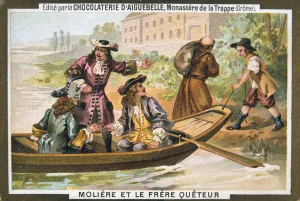Moli Re Collection
"Molière: A Master of French Comedy Through the Centuries" Molière, a name synonymous with wit and satire, has left an indelible mark on the world of theater
All Professionally Made to Order for Quick Shipping
"Molière: A Master of French Comedy Through the Centuries" Molière, a name synonymous with wit and satire, has left an indelible mark on the world of theater. His comedic genius continues to captivate audiences even today. In 1664 and 1673, Molière collaborated with composer Lully in Versailles to create the ballet "La Princesse d'Elide, " showcasing their combined talents in a grand spectacle fit for royalty. The artist Silvestre captured this momentous collaboration, immortalizing their partnership on canvas. Fast forward to 1911 when J. -B. Molière's play "A Bourgeois as a Nobleman" took center stage. Nikolai Sapunov's intricate stage design for Jourdains Room transported audiences into the bourgeois world turned upside down by Molière's biting social commentary. The portrait of Molière himself portrays him as an enigmatic figure, his gaze filled with intelligence and mischief. Jean Francois de Troy's painting from 1728 captures the essence of Moliere during his time, while Jacques Firmin Beauvarlet and Thomas Cook depict him in later centuries, ensuring his legacy endures. Moliere's plays were not only renowned for their humor but also for their sharp critique of societal norms. In "Les Precieuses Ridicules, " Jackson brings one such scene to life through artistry that echoes Moliere's own brilliance. J Posselwhite beautifully captures Moliere’s multifaceted talent as a writer, director, and actor in another artwork from 1833 – a testament to his versatility within the theatrical realm. Even beyond theater walls, Alexandre Lenoir pays homage to Moliere’s impact by immortalizing him alongside other notable figures who shaped France’s cultural landscape. Lastly, we glimpse into history with an intriguing depiction of Moliere encountering a mendicant friar, reminding us of the complexities and controversies that surrounded this theatrical legend.














